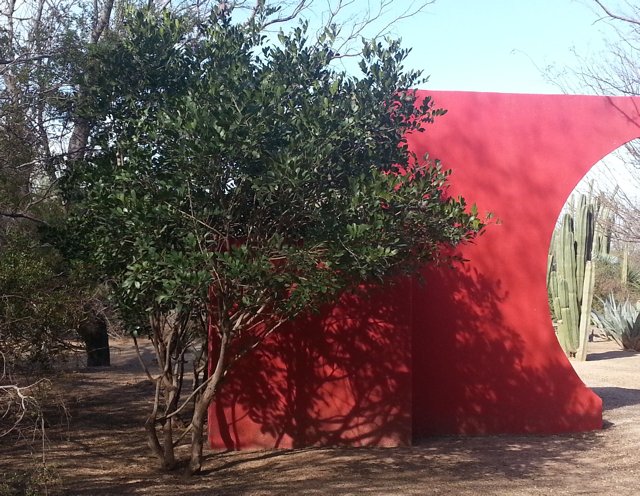


Sophora secundiflora
Texas Mountain Laurel
Foliage: Evergreen
Mature Height: 15’ - 20’
Mature Width: 8’ - 10’
Growth Rate: Slow
Hardiness: 0 degrees F
Exposure: Full Sun
Leaf Color: Dark Green
Shade: Dense
Flower Color: Purple
Flower Shape: Funnel Shaped Petals
Flower Season: Spring
Thorns: None
Propagation Method: Seed
Sizes Available: #25

Texas Mountain Laurel (Sophora secundiflora) is used in most desert landscapes as a flowering, evergreen shrub. Of the four common names associated with this plant, Sophora, Texas Mountain Laurel, Frijolito and Mescal Bean, Sophora is the most widely used. Native to Texas, New Mexico and northeastern Mexico, Sophora's are well adapted to high temperatures, well drained alkaline soils and full sun. They typically grow quite slowly eventually reaching a mature height of 15 to 20 feet and 8 to 10 feet wide. Its slow rate of growth to mature height has led some to categorize it as a large shrub/small tree.
The form is usually low branching or multiple trunked with a dispersed to fairly dense canopy of glossy green leaves. In native settings they are found growing at elevations from 1000' to 5000'. Sophora's can be naturalized to survive on average annual rainfall alone in some desert settings. Supplemental summer irrigations are usually required in central and southern Arizona. The highest rate of growth is achieved on established Sophora's when they are planted in full sun and given deep, monthly irrigations during spring and summer. The leaves are compound (made up of smaller leaflets) with 7 to 9, round, 1 inch diameter leaflets. With proper pruning, Sophora's can be trained into the form of a small, multiple trunked tree. Be aware that excessive pruning can inhibit flower production, as Sophora’s produce flowers only on one year old wood. Trunks range in color from dark gray to black.
Established plants are hardy to 0 degrees F. In March and April 4" to 8" bright purple, drooping clusters of wisteria-like flowers are produced. These flower clusters are very fragrant with a smell resembling grape soda. Flowers fade fairly quickly and by mid summer give rise to 3" to 4" fuzzy, tan, seed pods. The seeds are large, 3/8" to 1/2" diameter and dark orange in color. Seeds and flowers can be poisonous to children and pets. The risk is limited as the seed pod and seed coat are very hard and difficult to crack. Placement and maintenance of this shrub should take into account the risk posed by the flowers and seeds.
Sophora's can be used as individual flowering shrubs, in groupings to exploit the glossy green foliage, purple flowers and remarkable fragrance or as a screen or hedge planting. It mixes easily with other desert landscape plant materials and adds a unique color and texture to the landscape. It will tolerate planting in or near turf or in more native areas. Sophora's are thornless.
The only insect pest of any consequence is the larvae of the Pyralid Moth that feeds on leaves, young twig growth and immature seed pods. It is readily controlled by application of Bacillus thuringiensis (sometimes called BT), a widely available, commercial biological control agent. Sporadic availability and the relatively slow growth rate have limited the use and popularity of this shrub. Proper maintenance can enhance the growth and increase the popularity of this remarkable yet under-appreciated flowering desert shrub.


© Copyright 2000-2020 Arid Zone Trees